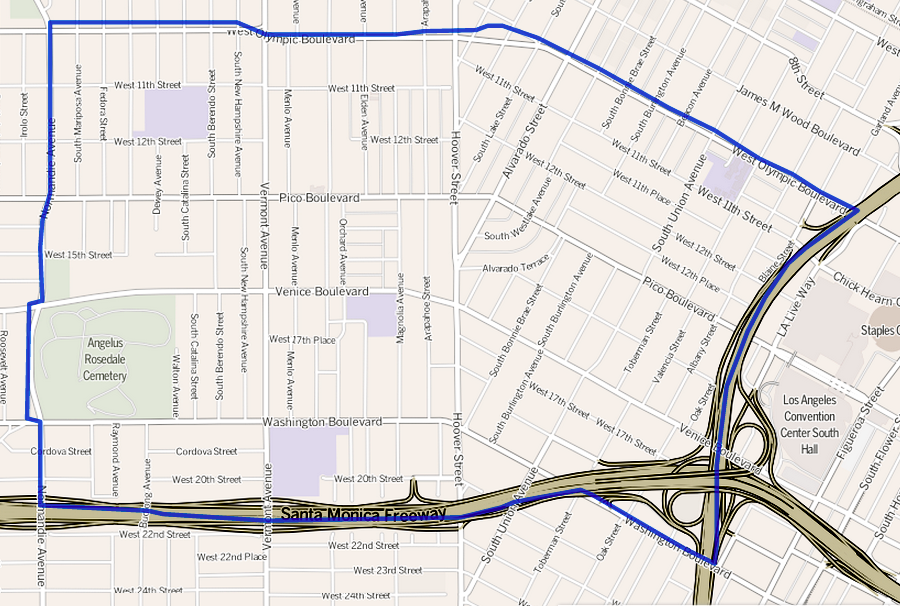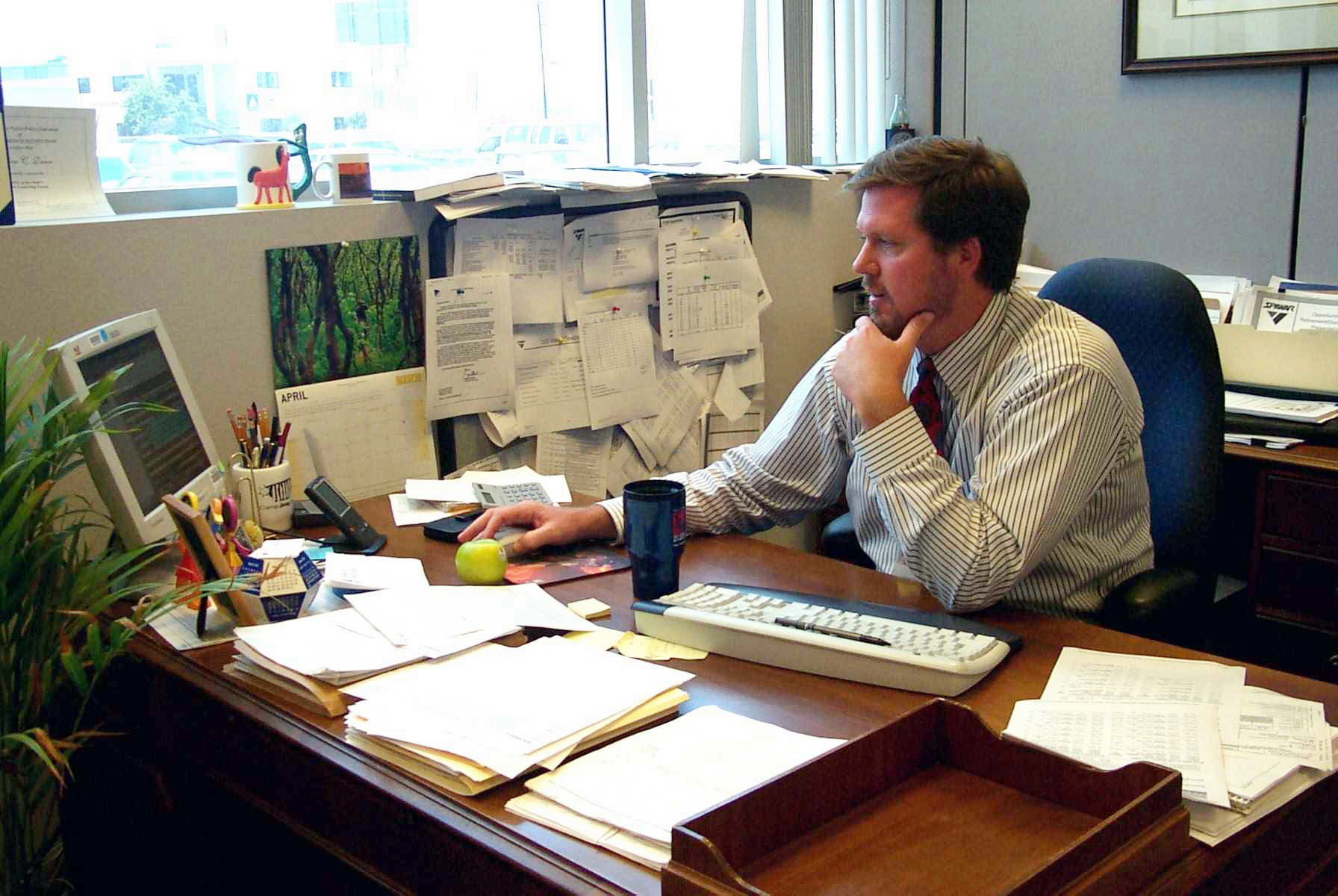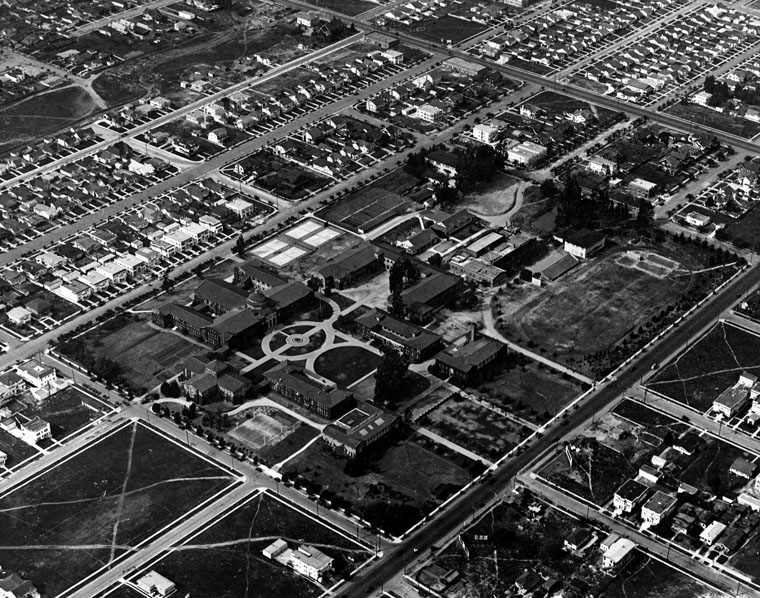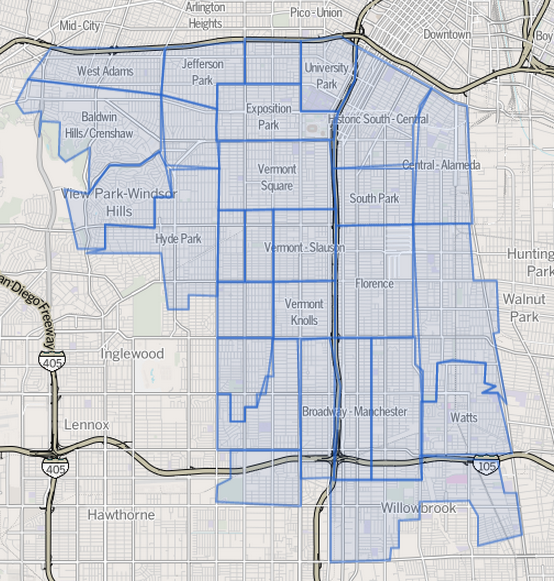|
Bernard C. Parks
Bernard C. Parks (born December 7, 1943) is an American politician, who served as a member of the Los Angeles City Council, representing the 8th district in South Los Angeles from 2003 to 2015. A member of the Democratic Party, Parks served as Chief of the Los Angeles Police Department from August 1997 to May 2002. Early life and education Parks is a graduate of Daniel Murphy High School and attended Los Angeles City College and received a bachelor's degree from Pepperdine University. He earned a Master's Degree in public administration from the University of Southern California. Career During his tenure, the LAPD was rocked by a corruption and police brutality scandal involving the elite C.R.A.S.H. anti-gang unit of the Rampart Division in the overwhelmingly Latino Pico-Union and Westlake districts. The Police Commission, under Commission President Rick J. Caruso did not recommend Parks for reappointment as police chief. Parks was succeeded as chief by William Bratton. In 2 ... [...More Info...] [...Related Items...] OR: [Wikipedia] [Google] [Baidu] |
Chief Of The Los Angeles Police Department ...
The Chief of the Los Angeles Police Department is the head of the LAPD. List of police chiefs See also References {{DEFAULTSORT:List Of Los Angeles Police Department Chiefs Of Police Police Law enforcement workers from California Los Angeles Los Angeles ( ; es, Los Ángeles, link=no , ), often referred to by its initials L.A., is the largest city in the state of California and the second most populous city in the United States after New York City, as well as one of the world ... [...More Info...] [...Related Items...] OR: [Wikipedia] [Google] [Baidu] |
Pico-Union, Los Angeles, California
Pico-Union is a neighborhood in Central Los Angeles, California. The name "Pico-Union" refers to the neighborhood that surrounds the intersection of Pico Boulevard and Union Avenue. Located immediately west of Downtown Los Angeles, it is home to over 40,000 residents. The neighborhood contains two historic districts, both listed in the National Register of Historic Places. It has five public schools as well as a public library. Geography Google Maps Google Maps draws the following boundaries for Pico-Union: Olympic Boulevard on the north, the Harbor Freeway on the east, the Santa Monica Freeway on the south and Hoover St. on the west. Mapping L.A. Project According to the Los Angeles Times' Mapping L.A. project, Pico-Union is bounded by Olympic Boulevard on the north, the Harbor Freeway on the east, the Santa Monica Freeway on the south and Normandie Avenue on the west. It also includes the California Highway Patrol station beneath the Dosan Ahn Chang Ho Memorial Inte ... [...More Info...] [...Related Items...] OR: [Wikipedia] [Google] [Baidu] |
LAPD Rampart Division
The Rampart Division of the Los Angeles Police Department (LAPD) serves communities to the west of Downtown Los Angeles (DTLA) including Silver Lake, Echo Park, Pico-Union and Westlake, all together designated as the Rampart patrol area. Its name is derived from Rampart Boulevard, one of the principal thoroughfares in its patrol area. The original station opened in 1966, located at 2710 West Temple Street. In 2008, the staff moved southeast to a newer facility located at 1401 West 6th Street. With 164,961 residents occupying a area, Rampart is one of Los Angeles's most densely populated communities. History The Los Angeles Police Department's (LAPD) Rampart Division (#02) was created in October 1966. It was formed from portions of LAPD's Central, Wilshire, University (now Southwest), and Hollywood Areas. William H. Parker was the Chief of Police at the time, and he stated that the new Rampart Division was needed to decrease the span between the Metropolitan, Hollywood, and ... [...More Info...] [...Related Items...] OR: [Wikipedia] [Google] [Baidu] |
Community Resources Against Street Hoodlums
The Community Resources Against Street Hoodlums (CRASH) was a specialized unit of the Los Angeles Police Department (LAPD) tasked with combating gang-related crime between 1979 and 2000. The unit was established in the South Central district of Los Angeles, California, United States, to combat rising gang violence during the period. Each of the LAPD's 18 divisions had a CRASH unit assigned to it, whose primary goal was to suppress gang-related crimes in the city, which came about primarily from the increase in illegal drug trade. CRASH was subject of the Rampart scandal from 1997, which exposed widespread police corruption within the unit, including involvement in murders, robberies, police brutality, evidence planting, and participating in gang activity. CRASH was disbanded in 2000 and was replaced by the LAPD Gang and Narcotics Division. History Establishment By 1973, street gangs were quickly becoming a problem in the 77th Street Division of the Los Angeles Pol ... [...More Info...] [...Related Items...] OR: [Wikipedia] [Google] [Baidu] |
Rampart Scandal
The Rampart scandal involved widespread police corruption in the Community Resources Against Street Hoodlums (CRASH) anti-gang unit of the Los Angeles Police Department's Rampart Division in the late 1990s. More than 70 police officers either assigned to or associated with the Rampart CRASH unit were initially implicated in various forms of misconduct, including unprovoked shootings, unprovoked beatings, planting of false evidence, stealing and dealing narcotics, bank robbery, perjury, and the covering up of evidence of these activities. The Rampart investigation, based mainly on statements of admitted corrupt CRASH officer Rafael Pérez, initially implicated over 70 officers in wrongdoing. Of those officers, enough evidence was found to bring 58 before an internal administrative board. However, only 24 were actually found to have committed any wrongdoing, with twelve given suspensions of various lengths, seven forced into resignation or retirement, and five terminated. As a re ... [...More Info...] [...Related Items...] OR: [Wikipedia] [Google] [Baidu] |
Public Administration
Public Administration (a form of governance) or Public Policy and Administration (an academic discipline) is the implementation of public policy, administration of government establishment (public governance), management of non-profit establishment ( nonprofit governance), and also a subfield of political science taught in public policy schools that studies this implementation and prepares civil servants, especially those in administrative positions for working in the public sector, voluntary sector, some industries in the private sector dealing with government relations and regulatory affairs, and those working as think tank researchers. As a "field of inquiry with a diverse scope" whose fundamental goal is to "advance management and policies so that government can function." Some of the various definitions which have been offered for the term are: "the management of public programs"; the "translation of politics into the reality that citizens see every day";Kettl, D ... [...More Info...] [...Related Items...] OR: [Wikipedia] [Google] [Baidu] |
Los Angeles City College
Los Angeles City College (LACC) is a public community college in East Hollywood, Los Angeles, California. A part of the Los Angeles Community College District, it is located on Vermont Avenue south of Santa Monica Boulevard on the former campus of the University of California, Los Angeles (UCLA). From 1947 to 1955, the college shared its campus with California State University, Los Angeles (Cal State LA), then known as Los Angeles State College of Applied Arts and Sciences (LASCAAS), before the university moved to its present campus of in the northeastern section of the City of Los Angeles, east of the Civic Center. History The LACC campus was originally a farm outside Los Angeles, owned by Dennis Sullivan. It is one of nine separate college campuses of the Los Angeles Community College District. When the Pacific Electric Interurban Railroad connected downtown Los Angeles and Hollywood in 1909, the area began to develop rapidly. In 1914, the LA Board of Education moved the ... [...More Info...] [...Related Items...] OR: [Wikipedia] [Google] [Baidu] |
South Los Angeles
South Los Angeles, also known as South Central Los Angeles or simply South Central, is a region in southwestern Los Angeles County, lying mostly within the city limits of Los Angeles, south of downtown. It is "defined on Los Angeles city maps as a 16-square-mile rectangle with two prongs at the south end.” In 2003, the Los Angeles City Council renamed this area "South Los Angeles". The name South Los Angeles can also refer to a larger 51-square mile region that includes areas within the city limits of Los Angeles as well as five unincorporated areas in the southern portion of the County of Los Angeles."South L.A." Mapping L.A. website of the ''Los Angeles Times'' Geography City of Los Angeles The City of Los Angeles delineates the South Los Angeles Communi ...[...More Info...] [...Related Items...] OR: [Wikipedia] [Google] [Baidu] |
Politician
A politician is a person active in party politics, or a person holding or seeking an elected office in government. Politicians propose, support, reject and create laws that govern the land and by an extension of its people. Broadly speaking, a politician can be anyone who seeks to achieve political power in a government. Identity Politicians are people who are politically active, especially in party politics. Political positions range from local governments to state governments to federal governments to international governments. All ''government leaders'' are considered politicians. Media and rhetoric Politicians are known for their rhetoric, as in speeches or campaign advertisements. They are especially known for using common themes that allow them to develop their political positions in terms familiar to the voters. Politicians of necessity become expert users of the media. Politicians in the 19th century made heavy use of newspapers, magazines, and pamphlets, as ... [...More Info...] [...Related Items...] OR: [Wikipedia] [Google] [Baidu] |





